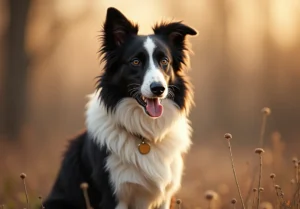Cats are known for their impressive jumping abilities, effortlessly leaping to great heights with grace and agility. Have you ever wondered why cats are so good at jumping?
Cats possess unique physical traits and instinctual behaviors that contribute to their exceptional jumping skills. Let’s explore the fascinating reasons behind why cats excel in this athletic feat.
Anatomy of a Jumper
Cats are truly remarkable creatures when it comes to jumping. Their incredible agility and prowess can be attributed to their unique anatomical features. One key aspect of their physicality is their highly developed leg muscles, which are designed for explosive power. These muscles allow cats to spring into action with lightning-fast speed, propelling them high into the air with precision and control.
Additionally, cats possess a flexible spine that acts like a coiled spring, storing and releasing energy as they prepare to leap. This flexibility enables them to adjust their body positioning mid-air, making last-minute adjustments to ensure a perfect landing. Their sharp claws also play a crucial role in providing traction and grip, allowing them to launch off surfaces with ease and accuracy.
In essence, a cat’s body is a well-oiled machine perfectly designed for jumping. From their powerful leg muscles to their flexible spine and keen claws, every aspect of their anatomy contributes to their impressive jumping abilities. It’s no wonder they can effortlessly leap to great heights with such grace and poise.
Evolutionary Adaptations
The evolutionary journey of cats has played a significant role in shaping their exceptional jumping skills. Through centuries of natural selection and survival in the wild, cats have honed their jumping abilities to perfection. In the wild, jumping is not just a way to catch prey or escape predators; it’s a matter of life and death.
Cats’ ancestors needed to be able to navigate rough terrain, leap across obstacles, and scale heights to find shelter or hunt for food. Over time, those with superior jumping skills were more likely to survive and pass on their genes, leading to the development of the incredible jumpers we know today.
In essence, cats’ jumping prowess is not just a random skill but a finely tuned adaptation that has been perfected through generations of evolution. Their ability to leap with precision and power is a testament to the incredible journey of adaptation and survival that has shaped these remarkable feline athletes.
Instinctual Behavior
Cats’ remarkable jumping abilities can be largely attributed to their innate instincts. As natural-born hunters, cats have evolved to be agile and proficient jumpers in order to stalk and capture prey effectively. Their ancestors, such as wildcats, relied on their jumping skills to pounce on fast-moving targets like birds or rodents. This instinctual behavior has been passed down through generations, making jumping a fundamental part of a cat’s nature.
Beyond hunting, jumping also serves as a means of defense and escape for cats in the wild. When faced with danger, a cat’s instinct tells them to leap to higher ground or a safe spot out of reach of potential threats. This survival instinct is deeply ingrained in their behavior, driving them to execute precise and powerful jumps when needed.
Muscle Power and Strength
One key factor that contributes to cats’ exceptional jumping prowess is their impressive muscle power and strength. Cats are equipped with strong hind leg muscles that act like springs, allowing them to generate explosive force when launching themselves into the air. These muscles are specifically designed for fast and forceful movements, giving cats the ability to jump great heights with ease.
Moreover, cats possess a flexible spine that enhances their jumping agility. Their spine acts as a shock absorber, enabling them to absorb the impact of landing after a high jump. This flexibility, combined with their strong muscles, allows cats to leap gracefully and land smoothly, showcasing their incredible strength and coordination.
In addition to their physical attributes, cats also have a keen sense of balance and coordination, further enhancing their jumping skills. This heightened sense of awareness enables them to accurately judge distances and angles, aiding in their precise and calculated jumps.
Extra Tip: Providing your cat with opportunities for regular exercise and play can help maintain their muscle strength and agility, keeping them in top jumping form.
Precision and Accuracy
Cats are experts in the art of jumping due to their exceptional spatial awareness and precise movements. Their keen senses allow them to calculate the distance and height required for a successful jump with incredible accuracy. This spatial awareness, combined with their sharp reflexes, enables cats to land exactly where they intend to, whether it’s on a narrow ledge or a high surface. Their ability to judge distances accurately and make split-second adjustments mid-air is truly remarkable.
Training and Practice
From a young age, kittens engage in playful activities that involve jumping, such as chasing toys or climbing furniture. These activities serve as valuable practice sessions that help kittens develop their jumping skills. Through repetition and play, cats learn to gauge distances and perfect their jumping technique. As they grow older, cats continue to refine their jumping abilities through daily exercise and exploration. Regular practice ensures that cats maintain their agility and strength, allowing them to execute impressive jumps with ease.
Key Tips for Improving Your Cat’s Jumping Skills: 1. Provide ample opportunities for play and exercise to keep your cat’s jumping abilities sharp. 2. Create a stimulating environment with vertical spaces for climbing and jumping. 3. Use interactive toys to encourage jumping and physical activity. 4. Reward your cat with treats or praise for successfully executing jumps. 5. Consult with a veterinarian if you notice any changes in your cat’s jumping ability to rule out any underlying health issues.
Comparisons to Other Animals
When it comes to jumping, cats are in a league of their own. They have incredible leg strength and impeccable coordination, which allows them to leap to impressive heights with ease. In comparison to other animals, cats have been known to jump up to six times their body length in a single bound, showcasing their remarkable power and agility. This ability puts them in the ranks of top jumpers in the animal kingdom, alongside grasshoppers and fleas. So, next time you see your cat effortlessly spring onto a high shelf, appreciate their unique jumping prowess that sets them apart from the rest.
Fun Facts About Cat Jumping
- Precision Landing: Cats have a keen sense of spatial awareness that helps them land on their feet nearly every time they jump. This ability is due to their flexible backbones and inner ear balance, which serve as natural stabilizers.
- Height Matters: A domestic cat can jump up to six times its body length in one leap, which is quite impressive considering their size. This means that even the smallest house cat has the potential to reach impressive heights.
- Acrobatic Feats: Cats are not only skilled at jumping vertically, but they are also excellent horizontal jumpers. Some athletic felines have been recorded jumping distances of over seven feet in pursuit of prey or toys.
- Instinctual Behavior: Jumping is a crucial survival skill for cats in the wild. It allows them to evade predators, reach elevated vantage points for hunting, and navigate their environment with ease.
- Continuous Improvement: Kittens begin honing their jumping skills at a young age, practicing and refining their techniques through play. This constant practice helps them develop strong muscles and coordination for proficient jumping abilities throughout their lives. So, the next time you witness your feline friend effortlessly leaping onto a countertop, marvel at their natural talents that make them such skilled jumpers.
Alex, a passionate animal lover, has experience in training and understanding animal behavior. As a proud pet parent to two dogs and three cats, he founded AnimalReport.net to share insights from animal experts and expand his knowledge of the animal kingdom.




